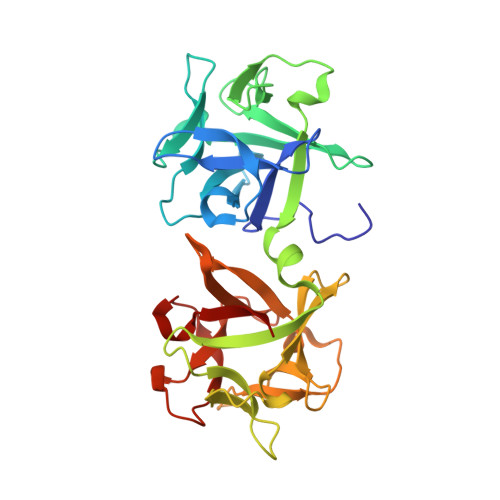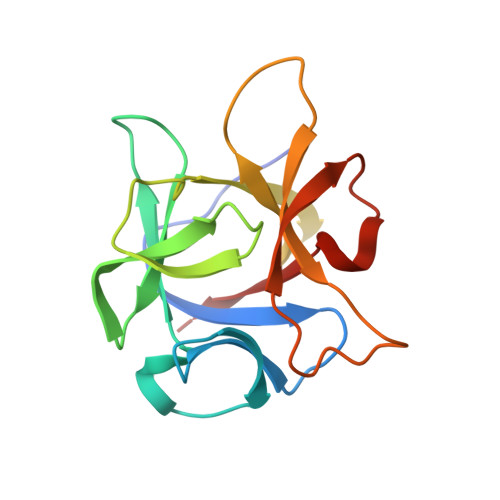A Novel Subunit Structure of Clostridium botulinum Serotype D Toxin Complex with Three Extended Arms
Hasegawa, K., Watanabe, T., Suzuki, T., Yamano, A., Oikawa, T., Sato, Y., Kouguchi, H., Yoneyama, T., Niwa, K., Ikeda, T., Ohyama, T.(2007) J Biological Chem 282: 24777-24783
- PubMed: 17581814
- DOI: https://doi.org/10.1074/jbc.M703446200
- Primary Citation of Related Structures:
2E4M - PubMed Abstract:
The botulinum neurotoxins (BoNTs) are the most potent toxins known in nature, causing the lethal disease known as botulism in humans and animals. The BoNTs act by inhibiting neurotransmitter release from cholinergic synapses. Clostridium botulinum strains produce large BoNTs toxin complexes, which include auxiliary non-toxic proteins that appear not only to protect BoNTs from the hostile environment of the digestive tract but also to assist BoNT translocation across the intestinal mucosal layer. In this study, we visualize for the first time a series of botulinum serotype D toxin complexes using negative stain transmission electron microscopy (TEM). The complexes consist of the 150-kDa BoNT, 130-kDa non-toxic non-hemagglutinin (NTNHA), and three kinds of hemagglutinin (HA) subcomponents: 70-kDa HA-70, 33-kDa HA-33, and 17-kDa HA-17. These components assemble sequentially to form the complex. A novel TEM image of the mature L-TC revealed an ellipsoidal-shaped structure with "three arms" attached. The "body" section was comprised of a single BoNT, a single NTNHA and three HA-70 molecules. The arm section consisted of a complex of HA-33 and HA-17 molecules. We determined the x-ray crystal structure of the complex formed by two HA-33 plus one HA-17. On the basis of the TEM image and biochemical results, we propose a novel 14-mer subunit model for the botulinum toxin complex. This unique model suggests how non-toxic components make up a "delivery vehicle" for BoNT.
- Department of Food Science and Technology, Faculty of Bioindustry, Tokyo University of Agriculture, 196 Yasaka, Abashiri 099-2493, Japan.
Organizational Affiliation:

















